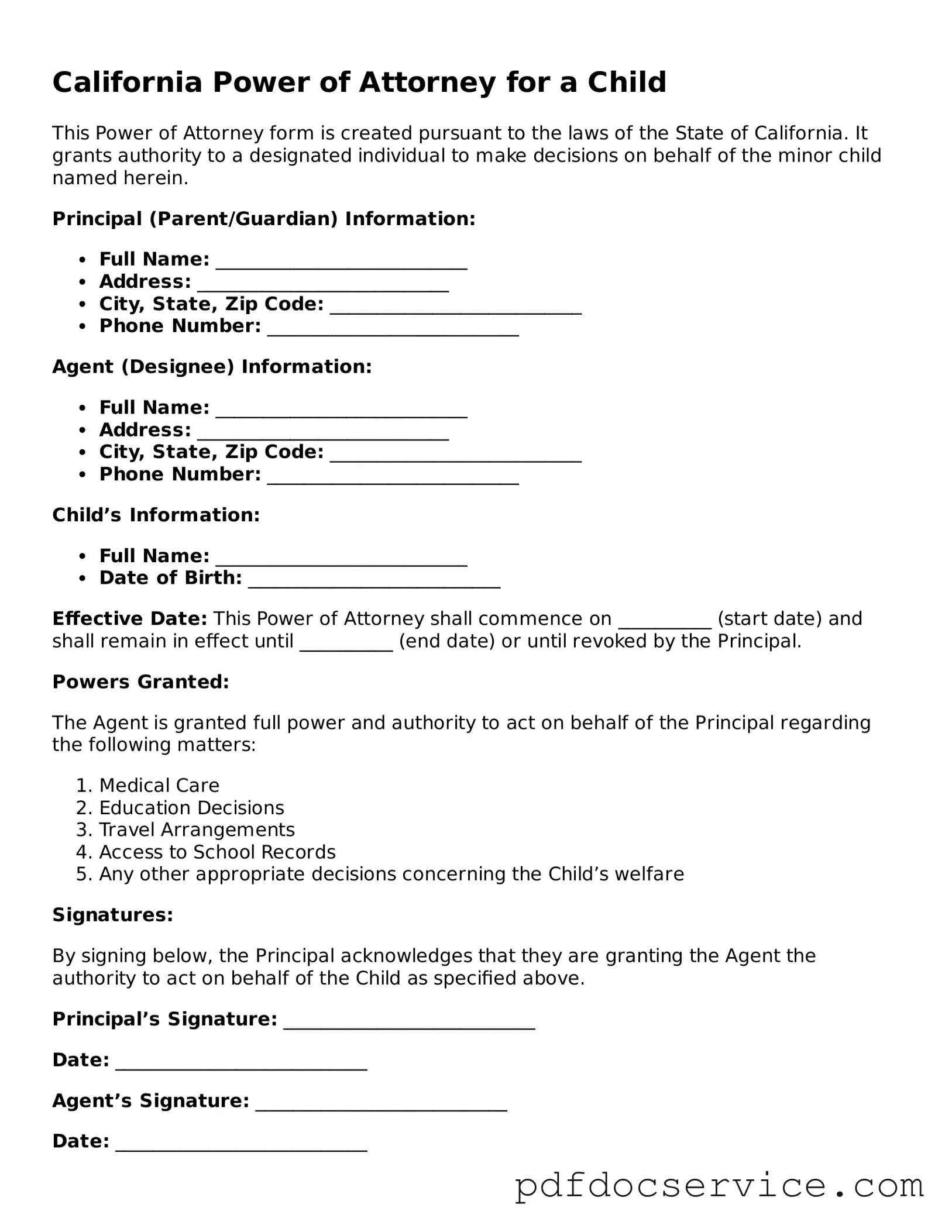What is a California Power of Attorney for a Child?
The California Power of Attorney for a Child form allows a parent or legal guardian to grant temporary authority to another adult to make decisions on behalf of their child. This can include decisions related to education, medical care, and general welfare. It is often used when parents are traveling or unable to care for their child for a period of time.
Who can be appointed as an agent?
Any responsible adult can be appointed as an agent. This could be a relative, family friend, or trusted neighbor. The key requirement is that the person must be someone the parent or guardian trusts to act in the best interest of the child.
How long is the Power of Attorney valid?
The Power of Attorney for a Child is typically valid for a specific duration as stated in the document. If no end date is specified, it remains effective until the parent or guardian revokes it or until the child turns 18 years old.
What decisions can the agent make?
The agent can make a variety of decisions on behalf of the child, including:
-
Medical decisions, such as consenting to treatment or procedures.
-
Educational decisions, including enrollment in school or extracurricular activities.
-
General welfare decisions, such as overseeing daily care and activities.
While notarization is not strictly required for the Power of Attorney for a Child to be valid, it is highly recommended. Having the document notarized can help prevent disputes and ensure that the agent's authority is recognized by schools, medical facilities, and other institutions.
Can I revoke the Power of Attorney?
Yes, you can revoke the Power of Attorney at any time. To do this, you must provide a written notice of revocation to the agent and any relevant parties, such as schools or medical providers. It is advisable to keep a copy of the revocation for your records.
What happens if the agent is unable to fulfill their duties?
If the appointed agent is unable to fulfill their responsibilities, the parent or guardian can appoint a new agent. This can be done by creating a new Power of Attorney form or amending the existing one, depending on the circumstances.
Yes, California provides a specific form for the Power of Attorney for a Child. It is important to use the correct form to ensure that it meets legal requirements. You can find the form on the California Department of Social Services website or through legal resource centers.
